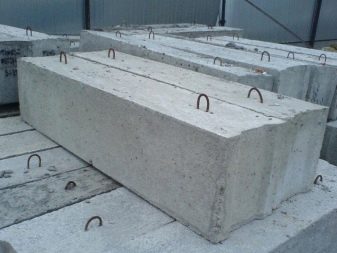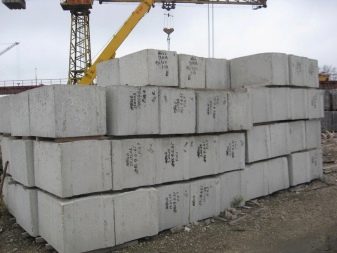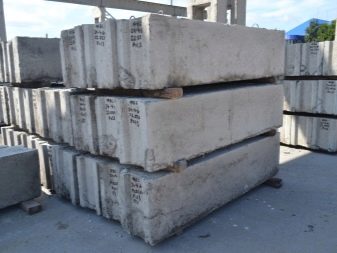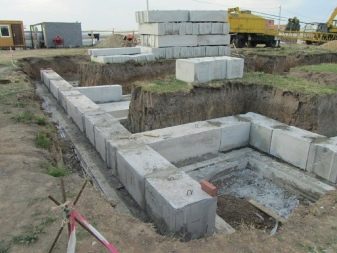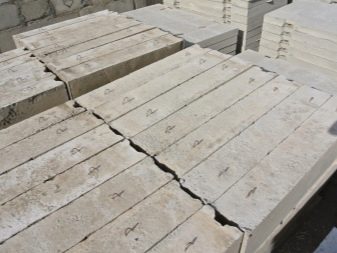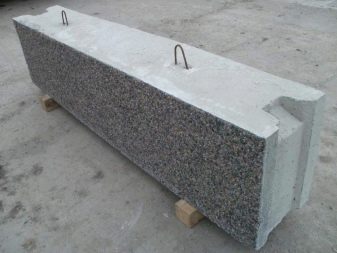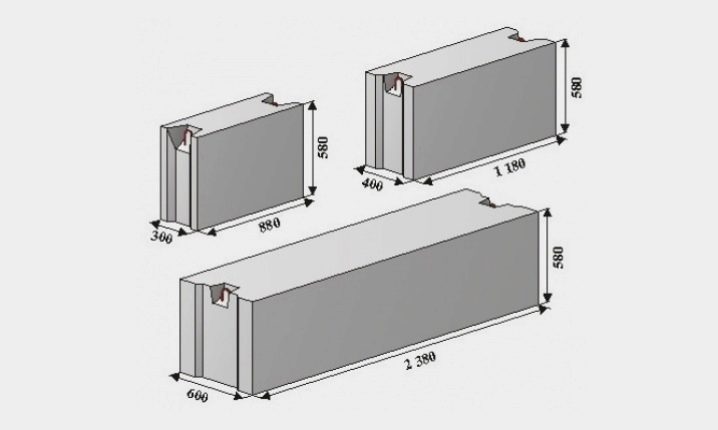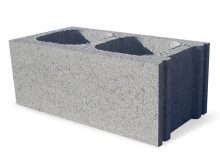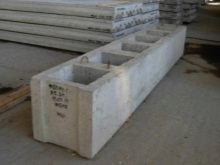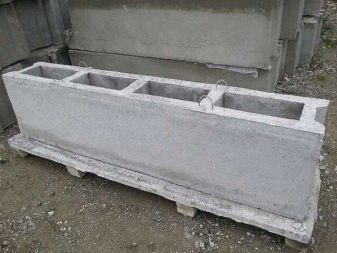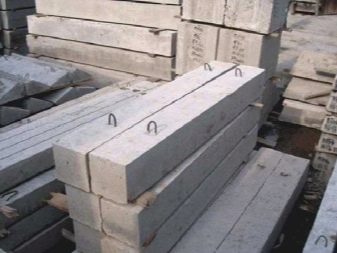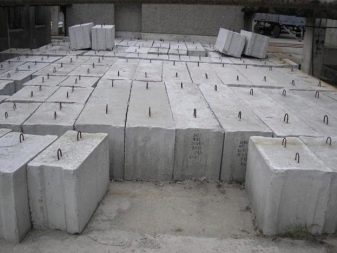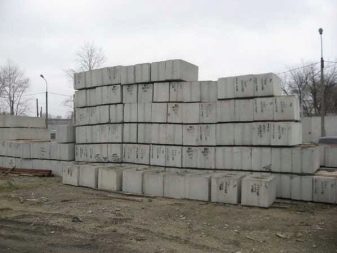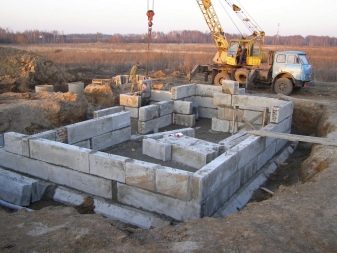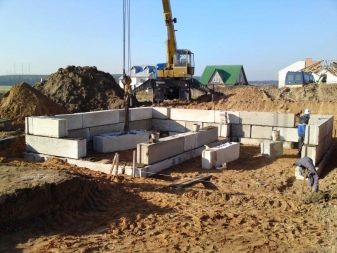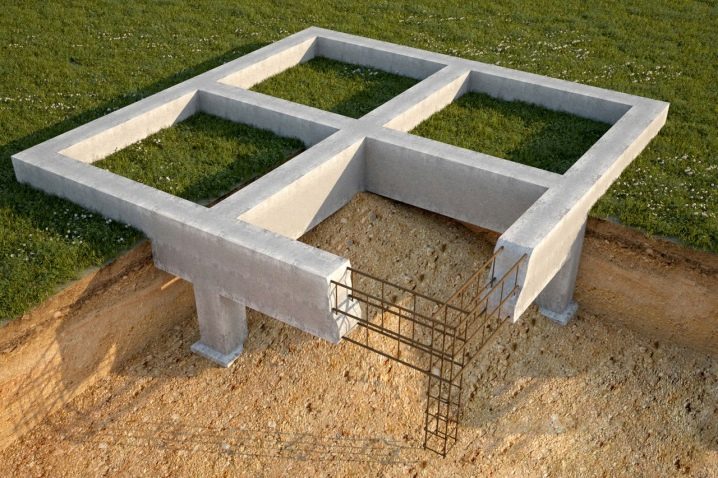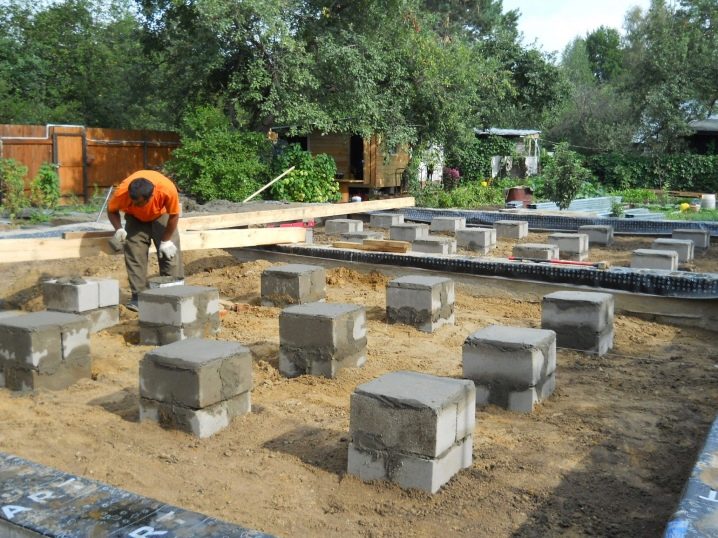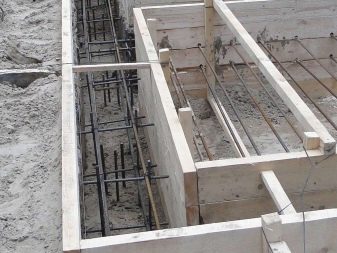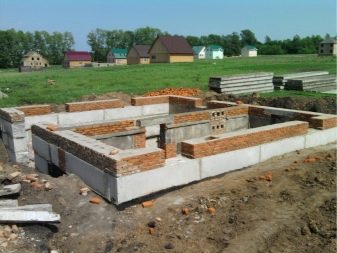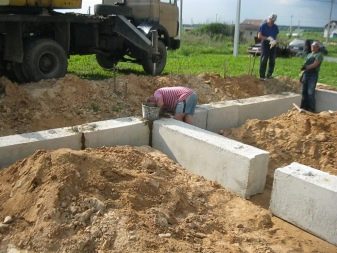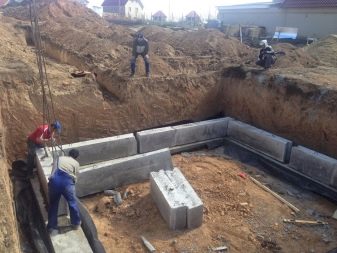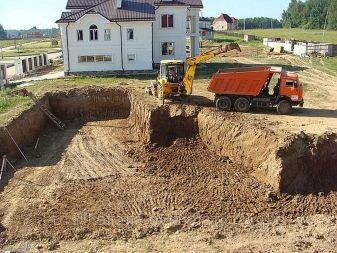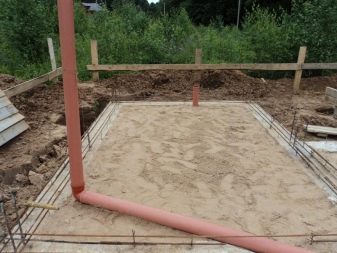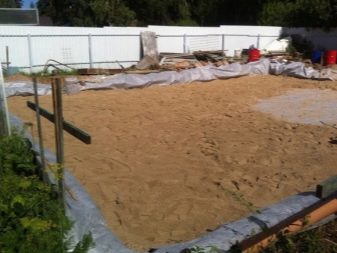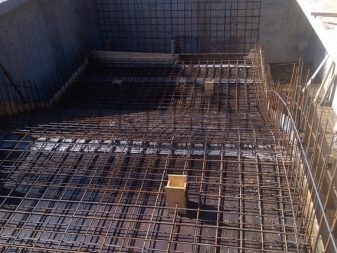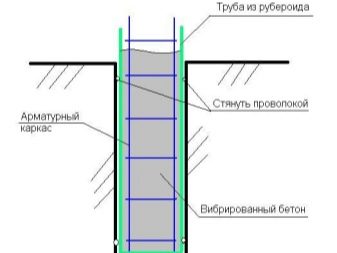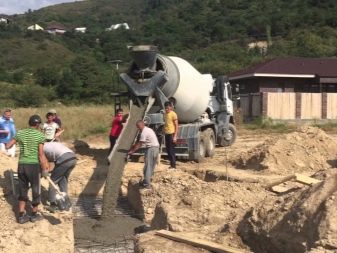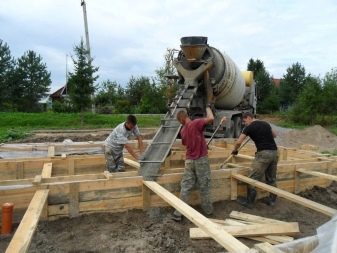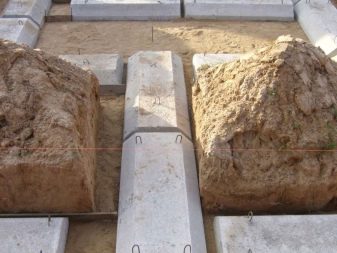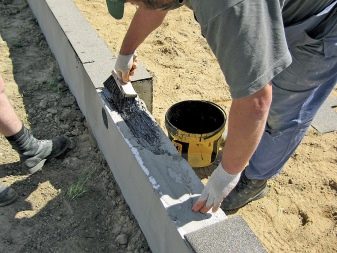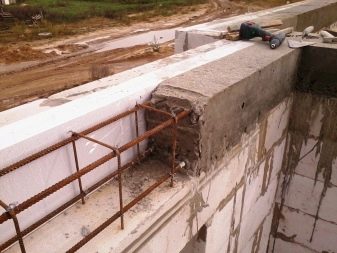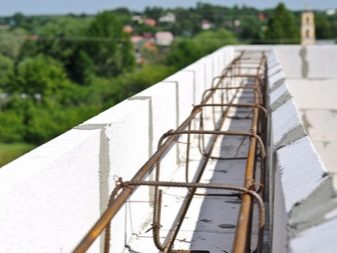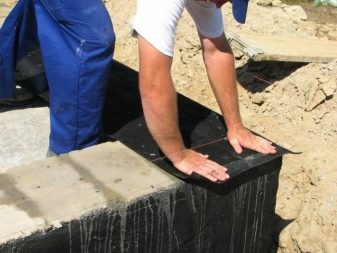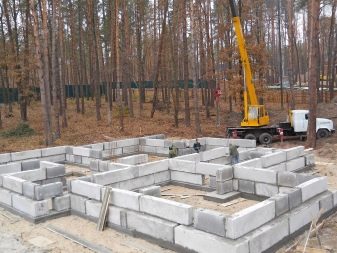How to choose and install foundation FBS-blocks?
Foundation blocks allow you to build strong and durable bases for different structures. Favorably stand out against the background of monolithic structures with practicality and speed of arrangement. Consider the positive and negative aspects of the foundation blocks, as well as the independent installation of this design.
Special features
FBS-blocks are used for the construction of foundations and walls of the basement, as well as for supporting structures (racks, bridges, ramps). In order for foundation blocks to have a high durability index and serve for a long time, they must have specific technical characteristics.
The density of building materials should be at least 1800 kg / cu.m, and inside the material should not contain air voids. The foundation blocks inside can be both reinforced and non-reinforced. The last variation is quite common. The reinforced products are made to order.
FBS function as a fixed formwork, fittings are installed in the voids and filled with concrete solution. They have clippings for practical installation of various communications. In accordance with GOST, all types of such blocks are used for the construction of walls, subfields, and solid structures are used for the construction of the foundation.
In the production process, the blocks are compacted on vibration tables, for casting they use specialized forms, which allow to observe the geometry of the structure with accuracy. Materials with broken geometry are not able to form dense masonry, and too large seams will later be a source of moisture penetration inside the structure. For accelerated hardening and curing, concrete is stripped. With this manufacturing process, concrete is able to achieve 70% stability in 24 hours.
In terms of rigidity and strength, foundation block constructions are inferior to monolithic bases, but they are cheaper and more practical.Foundation blocks are best suited for soils with high sand content.
In places with crumbly and soft soil, it is better to abandon the construction of such a base, because the structure can sink, which will lead to further destruction of the building.
Block designs are resistant to the effects of soil heaving forces. In those conditions where the tape concrete systems can break, the blocks only bend. This quality prefabricated foundation is provided by non-monolithic design.
pros
Foundation construction with the use of FBS is in great demand among consumers due to the existing advantages of this building material.
- High rate of frost. These building materials can be installed at any temperature conditions, because the product contains special cold-resistant additives. The structure of the reinforced concrete structure under the influence of low degrees remains unchanged.
- High resistance to aggressive environment.
- Reasonable cost of products.
- A wide selection of sizes of block designs.This allows the construction of very small premises, as well as large-scale production special objects.
Minuses
Arrangement of the block foundation requires the presence of specialized lifting equipment, and this means that you have to make certain financial costs for the rental of special equipment.
Block foundation is strong and durable, but its construction is associated with some inconveniences.
- Material costs for rental of lifting equipment.
- When installing the units one by one, scars are formed in the construction, which require additional waterproofing and thermal insulation. Otherwise, moisture will penetrate inside the room, as well as all thermal energy will go out through them. In the future, such factors will lead to the destruction of buildings.
Kinds
GOST, which establishes the rules for manufacturing FBS, provides for products of the following dimensions:
- length - 2380.1180, 880 mm (additional);
- width - 300, 400, 500, 600 mm;
- height - 280, 580 mm.
For the construction of basement and underground walls, foundation blocks are made of 3 types.
- FBS. Marking denotes continuous building materials.Strength indicators of this product are higher than those of other varieties. Only this type can be used to build a foundation for a house.
- FBV. Such products differ from the previous type in that they have a longitudinal notch, which is intended for the construction of engineering communications.
- FBP - it is hollow building materials made of concrete. Lightweight block products have square voids open down.
There are also small-sized structures, such as 600x600x600 mm and 400 mm in size. Each design is a rectangular parallelepiped with grooves in the ends for tight stowage, filled with a special mixture during the construction of the foundation or wall, and construction slings, for which they are picked up for transposition.
FBS structures are made of silicate or expanded clay concrete. The group of concrete strength should be:
- not less B 7, 5 for concrete with marking M100;
- not less than B 12, 5 for concrete with marking M150;
- for heavy concrete - from В 3, 5 (М50) to В15 (М200).
The frost resistance of the foundation blocks should be at least 50 freeze-thaw cycles, and the water resistance should be W2.
In the designation of a species, its dimensions in decimeters are marked, rounded up. The definition also indicates the concrete model:
- T - heavy;
- P - on cellular fillers;
- C - silicate.
Consider an example, FBS -24-4-6 t - this is a concrete block with dimensions of 2380x400x580 mm, which consists of heavy concrete.
The weight of the blocks is 260 kg and higher, therefore, specialized foundation lifting equipment is required for the construction of the foundation. For the construction of residential premises mainly use blocks, whose thickness is 60 cm. The most demanded mass of blocks is 1960 kg.
In terms of magnitude, the deviation of the parameters should be no more than 13 mm, in height and width of 8 mm, in the parameter of the notch 5 mm.
Device
From the fundamental block products can be built 2 types of frames:
- tape
- columnar.
The columnar construction is ideal for the construction of small-sized structures on heaving, sandy soils, as well as on soils with a high rate of groundwater. The tape prefabricated frame is suitable for various stone structures in one row.
Both types of bases are laid according to the general technology for the blocks.Block products are laid in the manner of brick laying (one by one) using cement mortar. In this case, it is necessary to observe that the cement mass contains a reasonable amount of fluid. Too much water will destroy the entire structure.
To increase the strength of the foundation between the walls of the horizontal and vertical rows of block products, reinforcement is laid. As a result, after pouring the cement mixture and laying the next row of blocks, the foundation will have a solid foundation strength.
If the building plan includes an underground garage, basement or ground floor, then in the ground it will be necessary to make a pit in which the foundation will be arranged. Concrete slabs are installed as a floor for the basement, or a monolithic screed is poured.
Installation
Step-by-step instructions for self-installation of block products include:
- preparatory work;
- excavation;
- arrangement of the sole;
- installation of formwork and reinforcement;
- pouring the pillow;
- laying blocks;
- waterproofing;
- installation of the reinforced belt.
Preparatory work
It should be noted that the frame of block products, in contrast to monolithic structures, is erected in a rather short period of time. And after its installation, you can proceed to the alignment of the walls. The most important condition for this is the correct calculation of the parameters of the foundation tape.
- The width of the future foundation must be greater than the design thickness of the walls of the building.
- Block products must pass freely into the prepared ditch, but at the same time there should be free space for the work of the builders.
- The depth of the trench under the perimeter of the base is calculated depending on the total weight of the future building, on the level of soil freezing, as well as on the soil characteristics.
Before proceeding with the installation, it is necessary to develop a diagram of the future foundation. For this task, you need to draw a layout of block products. Thus, it is possible to understand the order of installation of materials and their dressing.
Often, the width of the initial row of the block base is kept at 40 cm. For the next two rows, this coefficient is reduced to 30 centimeters. Knowing the necessary parameters of construction and the number of fundamental blocks, you can go to the hardware store for the purchase of building materials.
Excavation
The first step is to examine the construction site. Plan where the special equipment will be located. And you also need to take care that the construction site can interfere with work, interference is eliminated.
- The angles of the future structure are determined, into which the stakes are inserted. A rope or a rope is stretched between them, and after that intermediate special marking elements are installed on the sections of the future construction of the inner and outer walls.
- Digging is carried out. According to the rules, the depth of the pit should be equal to the depth of soil freezing with the addition of 20-25 centimeters. But in certain areas the depth of soil freezing can be about 2 meters, the cost of such arrangement will be irrational. Therefore, the average depth was taken as 80-100 cm.
Arrangement of pillows
There are 2 variations of the block base device: on a cushion of sand or on a concrete base. The second variation is suitable for unstable soils, but concrete pouring requires additional costs and effort. Before the process of arranging the cushion, the procedure for installing both options is the same.The procedure of building a foundation on a concrete base begins with the installation of formwork and reinforcement.
Gravel 20-40 fractions, sand, reinforcement are prepared in advance. Then the following work steps are performed:
- the walls and bottom of the pit are aligned;
- the bottom of the pit is covered with a layer of sand for 10-25 centimeters, poured over with water and carefully compacted;
- The sand cushion is covered with a layer of gravel (10 cm) and compacted.
Formwork installation and reinforcement
An edged board is suitable for collecting formwork, the thickness of which should be 2.5 cm. Formwork boards are fastened using a suitable method. Basically, screws are used for this purpose. The formwork is installed along the walls of the pit, such an installation must be checked with a building level.
For the reinforcement of the structure, metal rods with a diameter of 1.2-1.4 cm are used. They are connected into a grid with cells of 10x10 centimeters by means of a flexible wire. Basically, the reinforcement is carried out in 2 layers, while the lower and upper grids are placed at the same distance from the rubble and subsequent pouring. To fix the grids, perpendicular bars of the reinforcement are driven into the base.
If you plan to build a large and heavy building, then the number of reinforced layers should be increased.
Pouring pillows
Fill the entire structure with concrete mix. The solution should be poured slowly in an even layer. Filling in several areas pierced with reinforcement, it is necessary to remove excess air. The surface of the pillow is leveled.
After completing all the procedures, the construction is left for 3-4 weeks in order for it to gain sufficient strength. On hot days, concrete is occasionally moistened with water to prevent it from cracking.
Masonry blocks
Laying the foundation blocks will require a crane, which will lift the massive structure. You and your assistant will need to fix the block products and install them in the designated places. For installation, you need concrete marking M100. On average, the installation of 1 unit will require 10-15 liters of concrete mix.
Initially, the blocks are installed in the corners, for better orientation, the rope is stretched between the products, and the FBS level spans are filled in turn. Subsequent block rows are stacked on the solution in the opposite direction.
Waterproofing
To perform waterproofing, it is best to apply liquid mastic, which thoroughly coats the inner and outer walls of the foundation. In areas with heavy precipitation, experts recommend installing an additional layer of roofing material.
Mounting reinforced belt
To eliminate the risk of destruction of the entire structure in the future, it must be strengthened. Often, for the strength of the base structure, a reinforced concrete belt is cast on the surface row, the thickness of which is 20-30 centimeters. The reinforcement is applied reinforcement (10 mm). In the future, slabs will be installed on this belt.
Experienced masters can challenge the need to perform a reinforced belt, because they believe that the plates sufficiently distribute the load, you only need to properly mount them. But, according to experts who are already working with this design, it is better not to ignore the installation of armopoyas.
The design is as follows:
- formwork is mounted along the contour of the fundamental walls;
- reinforced mesh is placed in the formwork;
- poured concrete solution.
At this stage, the installation of the foundation of block products is completed.The technology is laborious, but simple, you can build it yourself, even without a certain experience. Having done everything according to the instructions, you will build a safe and strong foundation that will serve a long operational period.
Tips
Consider the recommendations of specialists in laying the fundamental blocks.
- Do not ignore the implementation of waterproofing, because it is the protection of the structure from precipitation.
- For thermal insulation, it is better to use polystyrene foam or polystyrene foam, which is mounted on the outside and inside of the room.
- If the size of the concreted blocks does not correspond to the perimeter of the base, voids will form between the block products. To fill them, they use monolithic inserts or specialized additional blocks. It is important that these aggregates have the same strength as fundamental block materials.
- In the process of mounting the foundation, it is necessary to leave a technological hole through which communication elements will be held in the future.
- Instead of the cement mixture, you can use a specialized adhesive solution.
- During the construction of the strip foundation, it is necessary to leave holes for ventilation.
- After the completion of installation work for one hundred percent setting of materials you need to wait about 30 days.
- After preparation of the cement mass it is forbidden to add water, as this will lead to loss of binding properties.
- Building a foundation of blocks is best done in the summer. This will help to avoid some difficulties with the geometric accuracy of digging the pit. After the rain, you need to wait until the ground is completely dry, and then you are allowed to proceed with the installation.
- If the concrete casting has already been completed, and it has started to rain, the entire structure should be covered with plastic wrap. Otherwise, the concrete will crack.
For information on how to select and install foundation FBS blocks, see the following video.

